
Your knees carry you through your daily journey, and when they hurt, everything feels harder. But here's ancient wisdom that still works today: gentle movement heals better than rest alone.
Yoga for knee pain offers a path to relief that honours both your body's need for healing and its natural desire to move.
Understanding Your Knees Through Yoga
In yoga, everything in the body is connected. If one area hurts, other parts try to protect it, which can lead to more strain. Your knees don't work alone. They depend on strong thighs, flexible hips with hip-opening poses, and stable ankles. When these areas become tight or weak, your knees suffer.
Yoga for knees works by:
Strengthening the muscles that support your knee joint
Increasing blood flow to bring healing nutrients
Reducing stiffness through gentle movement
Teaching your body better alignment patterns
Think of it as giving your knees the support team they need to feel strong again.
Essential Asanas for Knee Pain
Foundation Poses for Beginners
1. Mountain Pose (Tadasana)
How to do it: Stand tall with feet hip-width apart. Feel your weight evenly distributed. Gently engage your thigh muscles to support your kneecaps.
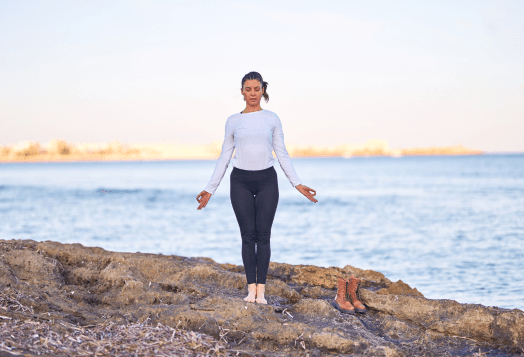
Why it helps: This teaches proper alignment and awakens the muscles that protect your knees.
Practice tip: Hold for 30 seconds, focusing on how your legs feel when properly aligned.
2. Chair Pose (Utkatasana)
How to do it: From Mountain Pose, bend your knees as if sitting in a chair. Keep knees behind toes. Raise arms overhead.

Why it helps: Strengthens quadriceps and glutes.
Beginner modification: Use an actual chair behind you for support. Only lower as far as comfortable.
3. Bridge Pose (Setu Bandhasana)
How to do it: Lie on your back, knees bent, feet flat. Slowly lift your hips while pressing your feet down.
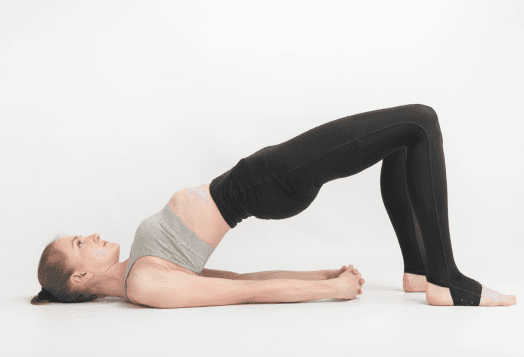
Why it helps: Strengthens hamstrings and glutes without putting weight on knees.
Practice note: Focus on lengthening rather than lifting high. Quality over quantity.
Beginner Yoga Exercises to Strengthen Knees
4. Wall Sit Meditation
How to do it: Stand with your back against a wall. Walk feet forward and slide down until thighs are parallel to the floor (or as low as comfortable).

Traditional element: In yoga, there’s a principle called ‘finding your edge’, describing the balance between effort and ease, where you challenge yourself without strain. Apply it while practising it.
Practice guidance: Start with 15 seconds. Breathe deeply. Build slowly to 1 minute.
5. Warrior II Preparation (Virabhadrasana II)
How to do it: Step one foot forward into a lunge. Turn the foot out slightly. Bend front knee over ankle, keeping back leg straight.

Why it's powerful: Ancient warriors needed strong legs. This pose builds the same stability.
Beginner approach: Hold for five breaths on each side. Focus on steady breathing.
Low-Impact Yoga Knee Healing Poses
6. Supported Child's Pose (Balasana)
How to do it: Kneel on the mat, big toes touching. Sit back toward heels and fold forward, stretching arms ahead.
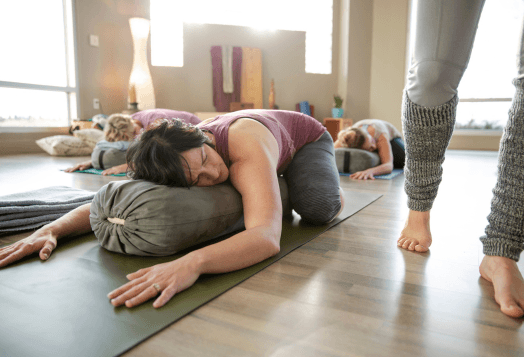
Knee-friendly version: Place a cushion between calves and thighs if kneeling feels uncomfortable.
Healing benefit: Gentle compression encourages blood flow around the knee joints.
7. Reclined Knee Circles
How to do it: Lie on your back. Hug one knee to chest and make slow, gentle circles.
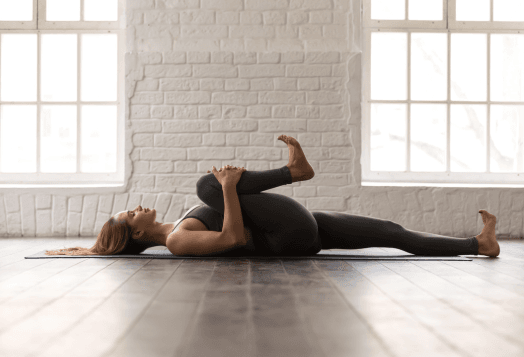
Scientific fact: This movement helps synovial fluid move freely within the joint capsule.
Practice method: 5 circles in each direction, then switch legs.
Yoga Poses to Relieve Knee Pain in Old Age
8. Gentle Heel Slides
How to do it: Lie comfortably. Slowly bend one knee, sliding heel toward buttocks, then straighten.
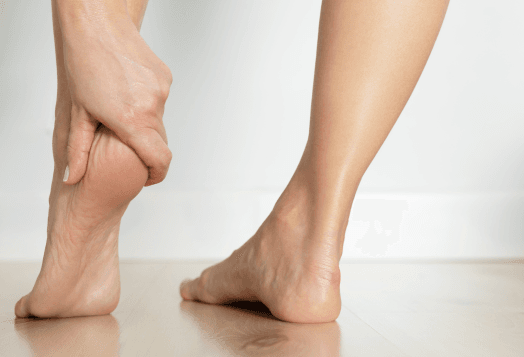
Why it helps: Maintains knee flexibility without weight-bearing stress.
Senior-friendly tip: Use a towel under your heel to make sliding easier.
9. Wall Legs Up (Viparita Karani)
How to do it: Lie on your back with legs up the wall. Let your arms rest by your sides.

Ancient benefit: Called ‘the great restorer’ in yoga texts, it reduces swelling and soothes tired joints.
Practice time: Stay for 5-15 minutes. Perfect end to any yoga for knee pain in old age session.
10. Supported Forward Fold
How to do it: Sit with legs extended, place cushions on your thighs, and gently fold forward over the cushions.

Modification wisdom: The goal isn't touching your toes—it's lengthening your spine and hamstrings.
Yoga Benefits for Every Age Group
Yoga exercises for knee pain help many people:
Office workers with stiff, achy knees from sitting
Seniors experiencing natural joint changes
People with arthritis seeking gentle movement, like those addressing neck pain with yoga
Those who want to prevent future knee problems
Even if you are a beginner, practising simple yoga poses for knee pain relief will help you. You don't need to be flexible or strong to start.
Wisdom from Yoga Tradition
1. Safety Guidelines
Ancient yoga teachers always emphasised ahimsa—non-violence toward yourself. This means:
Never force a pose: Pain is your body's wisdom speaking. Listen.
Use props freely: Blocks, cushions, and walls are tools, not crutches.
Breathe deeply: If you can't breathe calmly in a pose, ease out slightly.
Start slowly: Even master yogis began with simple poses.
Honour your body's rhythm: Some days you'll feel stronger, others more gentle.
2. When to Avoid Certain Poses
Skip these until your knees feel stronger:
Deep squats or lotus pose
Jumping movements
Poses requiring deep knee bends
Any movement that causes sharp pain
3. Creating Lasting Relief
Yoga for knee pain works best when practised regularly. Like water slowly shaping stone, gentle, consistent movement creates lasting change.
Week 1-2: Focus on learning proper alignment. Week 3-4: Notice increased awareness in your knees. Week 5-8: Feel growing strength and flexibility. Month 3+: Experience the cumulative benefits of dedicated practice.
Start Yoga Today for Healthy Knees
For beginners, yoga practice for knee pain relief is like tending a garden. You plant seeds of gentle movement, water them with consistent practice, and watch healing grow over time. Your knees have carried you this far—they deserve compassionate care with the help of your yoga instructors.
Disclaimer: This article is for informational purposes only and is not a substitute for professional medical advice. Always consult your physician or a certified yoga therapist before starting a new exercise routine, especially if you have a pre-existing condition or recent injury.




